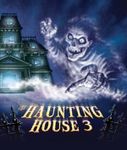- Publisher
- Twilight Creations, Inc.
- Published in
- 2004
- My Rating
- 6.0
- BGG Rating
- 5.37
- BGG Rank
- 26508
- Players
- 2-6
- Ages
- 10+
- Duration
- 0:45
- Complexity
- 1.3788 / 5
- Acquired
- August 2008
- Eager to Play
- No
- Plays
- 8
- Last Played
- October 17, 2021
- Time Spent
- 6:00
This is a tile game of traversing a changing maze trying to exit first. Each round of play has two phases, one random and one chosen. Players have cards defining what actions they will take, and they will take 4 actions each phase. Another player will randomly choose the cards during the random phase, but during the chosen phase each player may carefully choose what they want to do and in what order. Players simultaneously reveal their actions one at a time, and the First Player acts first, knowing what everyone else will do. Actions include rotating tiles, moving, swapping tiles, trading places, and moving the exit. The game's randomness is balanced by the allowing the users to choose their actions, which is in turn balanced by the random choice. It's a good marriage.
Eight plays
- September 12, 2015
- October 28, 2013
- March 19, 2010
- March 15, 2010
- March 13, 2010
- March 08, 2010
- February 07, 2010
- October 17, 2021


